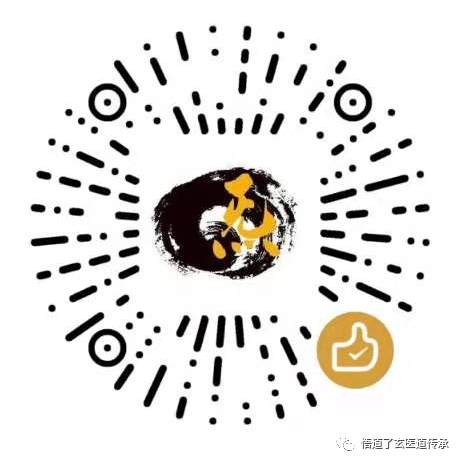The Six Fu organs refer to the gallbladder, stomach, small intestine, large intestine, bladder, and San Jiao (Triple Burner). Their physiological function is to “transport and transform substances,” and their physiological characteristics are “to excrete without storing” and “to be full but not overflowing.” Food enters through the esophagus into the stomach, where it is processed and then transmitted to the small intestine. The small intestine separates the clear (essence and fluids) from the turbid (waste), with the clear being absorbed by the Spleen and distributed to the Four Zang organs, while the turbid is passed down to the large intestine, where it is formed into feces and expelled from the body. The turbid fluids produced by the metabolism of the Zang-Fu organs are injected into the kidneys and bladder through the San Jiao, where they are transformed into urine under the vaporization of Kidney Qi and expelled from the body. During the digestion, absorption, and excretion of food, it must pass through the seven portals of the digestive tract, referred to as the “Seven Chong Men” in the “Nan Jing” (Classic of Difficulties). As stated in the “Nan Jing, Chapter 44”: “The lips are the flying gate, the teeth are the door, the epiglottis is the suction gate, the stomach is the entrance, the lower opening of the stomach is the幽门 (pylorus), the junction of the large and small intestines is the阑门 (barrier gate), and the lower extreme is the魄门 (spirit gate), hence it is called the Seven Chong Men.”
The common physiological characteristic of the Six Fu organs is to receive and transport food and fluids, thus their Qi has the characteristic of being downward-moving, as stated in the “Su Wen, Chapter on the Five Zang”: “The Six Fu organs transport and transform substances but do not store them, hence they are full but cannot overflow. This is because when food and fluids enter, the stomach is full while the intestines are empty. When food descends, the intestines are full while the stomach is empty.” Each Fu organ must timely empty its contents to maintain smooth function and coordination, hence the saying, “The Six Fu organs function through smoothness and follow the principle of descent.”1. GallbladderThe gallbladder is the foremost of the Six Fu organs and is also classified as a奇恒之腑 (extraordinary organ). It is located beneath the right rib cage, attached to the small lobe of the liver. The gallbladder and liver are interconnected through the Foot Shaoyang and Foot Jueyin meridians, forming an interior-exterior relationship. The primary physiological function of the gallbladder is to store and excrete bile and to govern decision-making.(1) Main Physiological Functions1. Storage and Excretion of BileBile originates from the liver, produced from liver essence and blood, or condensed from residual liver Qi. Once generated, bile enters the gallbladder, where it is concentrated and stored. The bile stored in the gallbladder is excreted into the intestines under the dispersing action of liver Qi, promoting the digestion and absorption of food and fluids. If the liver and gallbladder functions are abnormal, bile secretion and excretion may be obstructed, affecting the Spleen and Stomach’s ability to receive, process, and transport food, leading to symptoms such as loss of appetite, abdominal distension, and diarrhea. If damp-heat accumulates in the liver and gallbladder, causing liver Qi to fail in its dispersing function, bile may overflow and seep into the skin, resulting in jaundice, with symptoms such as yellowing of the eyes, skin, and dark urine. In contrast to the rising of liver Qi, gallbladder Qi descends; if gallbladder Qi is obstructed, it may lead to symptoms such as bitter taste in the mouth, vomiting of yellow-green bile, and other related issues.2. Governing Decision-MakingThe gallbladder governs decision-making, which refers to its role in mental awareness and cognitive activities, enabling the judgment of situations and making decisions. This function is crucial for defending against and eliminating adverse effects of certain mental stimuli, maintaining the normal flow and metabolism of Qi, blood, and fluids, and ensuring coordination among the Zang-Fu organs. Individuals with strong gallbladder Qi are less affected by intense mental stimuli and recover more quickly; conversely, those with weak gallbladder Qi are more susceptible to illness from adverse mental stimuli, leading to symptoms such as timidity, anxiety, insomnia, and vivid dreams.(2) The Gallbladder as an Extraordinary OrganThe gallbladder is a hollow, sac-like organ that stores bile. Ancient practitioners believed that bile is a pure and refined substance, referred to as “essence juice,” hence the gallbladder is known as the “abode of essence” or “house of purity.” The structural form of the gallbladder is similar to the other five Fu organs, all being hollow tubular or sac-like organs, thus it is one of the Six Fu organs; however, due to its storage of essence juice, it shares functional characteristics with the Five Zang organs, which “store essence and Qi,” and it does not directly contact food and fluids, only excreting bile into the intestines to aid in digestion and absorption, thus it is also classified as an extraordinary organ.2. StomachThe stomach is a vital organ for the digestion and absorption of food, responsible for receiving and processing food and fluids, often referred to as the “Tai Cang” (Great Warehouse) or “Sea of Food and Fluids.” The stomach and spleen reside in the middle jiao, “connected by membranes,” and are interconnected through the Foot Yangming Stomach meridian and the Foot Taiyin Spleen meridian, forming an interior-exterior relationship. Both the stomach and spleen belong to the Earth element in the Five Elements: the stomach is Yangming dry earth, while the spleen is Taiyin damp earth.The stomach is located in the upper part of the abdominal cavity, connecting above to the esophagus and below to the small intestine. The stomach cavity is referred to as the “stomach cavity” and is divided into three parts: the upper part is the upper cavity, including the entrance; the lower part is the lower cavity, including the pylorus; the middle part is referred to as the middle cavity. The entrance connects to the esophagus, and the pylorus connects to the small intestine, serving as the passage for food entering and exiting the stomach. The primary physiological function of the stomach is to receive and process food and fluids, with the physiological characteristics of promoting downward movement and favoring moisture while disliking dryness.(1) Main Physiological Functions1. Governing the Reception of Food and FluidsThe stomach governs the reception of food and fluids, meaning that the stomach Qi has the function of accepting and accommodating food and fluids. When food enters, it passes through the esophagus into the stomach, where it is accepted and temporarily stored under the downward-moving action of stomach Qi, hence the stomach is referred to as the “Tai Cang” or “Sea of Food and Fluids.” The generation of the body’s essence, Qi, blood, and fluids relies on the nutrients from food, thus the stomach is also known as the “Sea of Food and Fluids for Qi and Blood.” The stomach’s function of receiving food and fluids is the foundation of its processing function and is crucial for the digestion and absorption of food. Therefore, the strength of the stomach’s reception function can be reflected in appetite and food intake.2. Governing the Processing of Food and FluidsThe stomach governs the processing of food and fluids, meaning that stomach Qi initially digests food and forms chyme. The food contained in the stomach is ground and processed by stomach Qi, allowing the refined substances to be absorbed and transported by spleen Qi to nourish the entire body, while undigested chyme is passed down to the small intestine for further digestion.The stomach’s functions of receiving and processing food and fluids must work in conjunction with the spleen’s transport function; only through coordinated reception and transport can food and fluids be transformed into refined substances, which in turn generate essence, Qi, blood, and fluids to nourish the body.(2) Physiological Characteristics1. Governing Downward MovementThe stomach governs downward movement, meaning that stomach Qi should maintain a smooth downward trend. The downward action of stomach Qi is primarily reflected in the processes of digestion and the excretion of waste: ① Food enters the stomach, which accepts it without rejection; ② The chyme formed through the processing of stomach Qi is passed down to the small intestine for further digestion; ③ Food residues move down to the large intestine, where they are dried and formed into feces; ④ Feces are expelled from the body in a regulated manner. The theory of Zangxiang summarizes the physiological functions of the entire digestive system through the upward and downward movements of spleen and stomach Qi. The spleen should rise for health, while the stomach should descend for harmony; the coordination of spleen rising and stomach descending promotes the digestion and absorption of food.The stomach’s governing of downward movement is a prerequisite for the reception of food and fluids. Therefore, if the stomach fails to maintain downward movement, symptoms such as poor appetite, fullness or pain in the stomach area, and constipation may occur. If stomach Qi rises instead of descending, symptoms such as nausea, vomiting, belching, and regurgitation may arise. The spleen and stomach are central to the body’s Qi dynamics. The downward movement of stomach Qi and the upward lifting of spleen Qi mutually support each other; if the stomach fails to descend and the spleen Qi does not rise, they can also influence each other. The failure of the stomach to descend not only affects the smooth functioning of the Six Fu organs but also impacts the overall Qi dynamics of the body, leading to various pathological changes. As stated in the “Su Wen, Chapter on Reversal Regulation”: “If the stomach is not harmonious, then one cannot rest peacefully.”2. Favoring Moisture and Disliking DrynessThe stomach favors moisture and dislikes dryness, meaning that the stomach should maintain sufficient fluids to facilitate the reception and processing of food. The stomach’s reception and processing depend not only on the propulsion and vaporization of stomach Qi but also on the moisture provided by fluids within the stomach. When the stomach is adequately hydrated, it can maintain its functions of reception and processing and its downward-moving characteristics. The stomach, being Yang earth, favors moisture and dislikes dryness; thus, its diseases are prone to the harm of dryness-heat, and the fluids within the stomach are easily damaged. Therefore, when treating stomach diseases, it is essential to protect the fluids within the stomach. Even when using bitter cold purgatives, one should stop as soon as the condition improves to eliminate excess heat and dryness, avoiding excessive treatment to prevent damaging the yin.
If you enjoyed this article, please scan the QR code to appreciate the author!

To help more people understand and learn about TCM, please share this article with your friends and groups! Thank you!!

